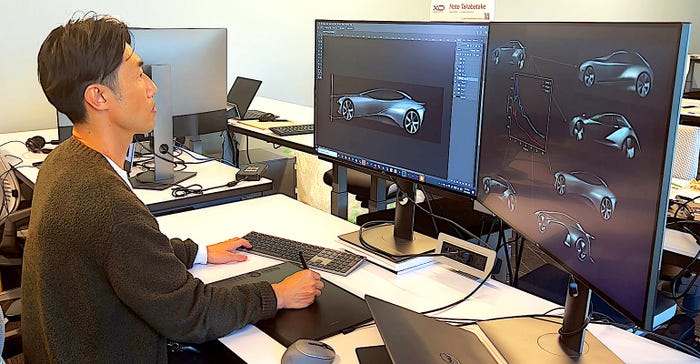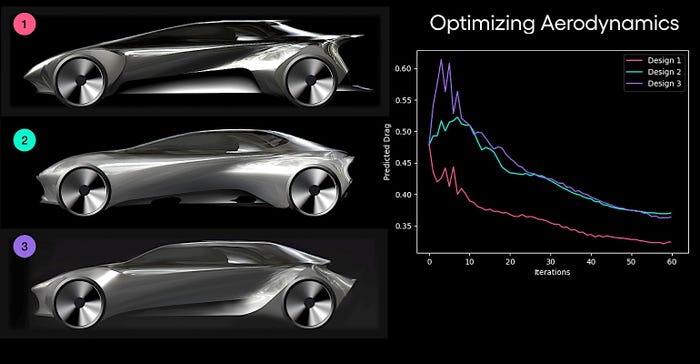Toyota Researchers Steer Generative AI to Aid Engineering
Toyota’s new approach adds capabilities by incorporating engineering constraints into generative AI models.

Researchers at the Toyota Research Institute (TRI) in Los Altos, Calif. have released a pair of papers describing a technique for incorporating precise engineering constraints into a generative AI-augmented design process.
Vehicle designers can apply factors such as EV driving range-sapping aerodynamic drag and vehicle dimensions like ride height and cabin size can now be implicitly incorporated into the generative AI process.
Current practice is for designers to use publicly available text-to-image generative AI tools early in their creative process. The new Toyota technique lets designers add initial design sketches and engineering requirements into this process, which reduces the number of iterations needed to marry design and engineering considerations.
“Generative AI tools are often used as inspiration for designers, but cannot handle the complex engineering and safety considerations that go into actual car design,” said Avinash Balachandran, director of TRI’s Human Interactive Driving (HID) Division, whose team worked on the technology. “This technique combines Toyota’s traditional engineering strengths with the state-of-the-art capabilities of modern generative AI.”
They used principles from optimization theory, which is used extensively for computer-aided engineering, to text-to-image-based generative AI. The resulting algorithm allows the designer to optimize engineering constraints while maintaining their text-based stylistic prompts to the generative AI process.
Problems in optimization theory consist of maximizing or minimizing a real function by systematically choosing input values from within an allowed set and computing the value of the function to find the "best available" values of some objective function within a defined domain.
The first paper, Drag-Guided Diffusion Models for Vehicle Image Generation, proposes using physics-based guidance, which enables optimization of a performance metric during the generation process. The researchers’ proof-of-concept was to add drag guidance to Stable Diffusion, allowing the tool to generate images of novel vehicles while simultaneously minimizing their predicted drag coefficients.
The second paper, Interpreting and Improving Diffusion Models Using the Euclidean Distance Function, investigated how to denoise the data to improve results. Researchers were able to generate high-quality samples on latent diffusion models.

Using Toyota’s solution, designers can use the regular generative AI text prompt to request an array of designs based on a provided initial prototype sketch. They’d ask the AI to include specific stylistic properties like “sleek,” “SUV-like,” and “modern” while also optimizing a quantitative performance metric such as aerodynamic drag. That was the parameter applied in Toyota’s research paper, but the approach can also optimize any other performance metrics or constraints from a design image.
“TRI is harnessing the creative power of AI to amplify automobile designers and engineers,” said Charlene Wu, senior director of TRI’s Human-Centered AI (HCAI) Division, whose team collaborated with the Human Interactive Driving team on this project.
The company says that it hopes this tool’s ability to let engineers and designers incorporate engineering constraints directly into the design process could let Toyota accelerate the design process for future vehicles.

About the Author(s)
You May Also Like





